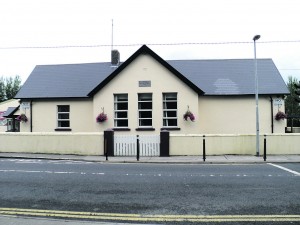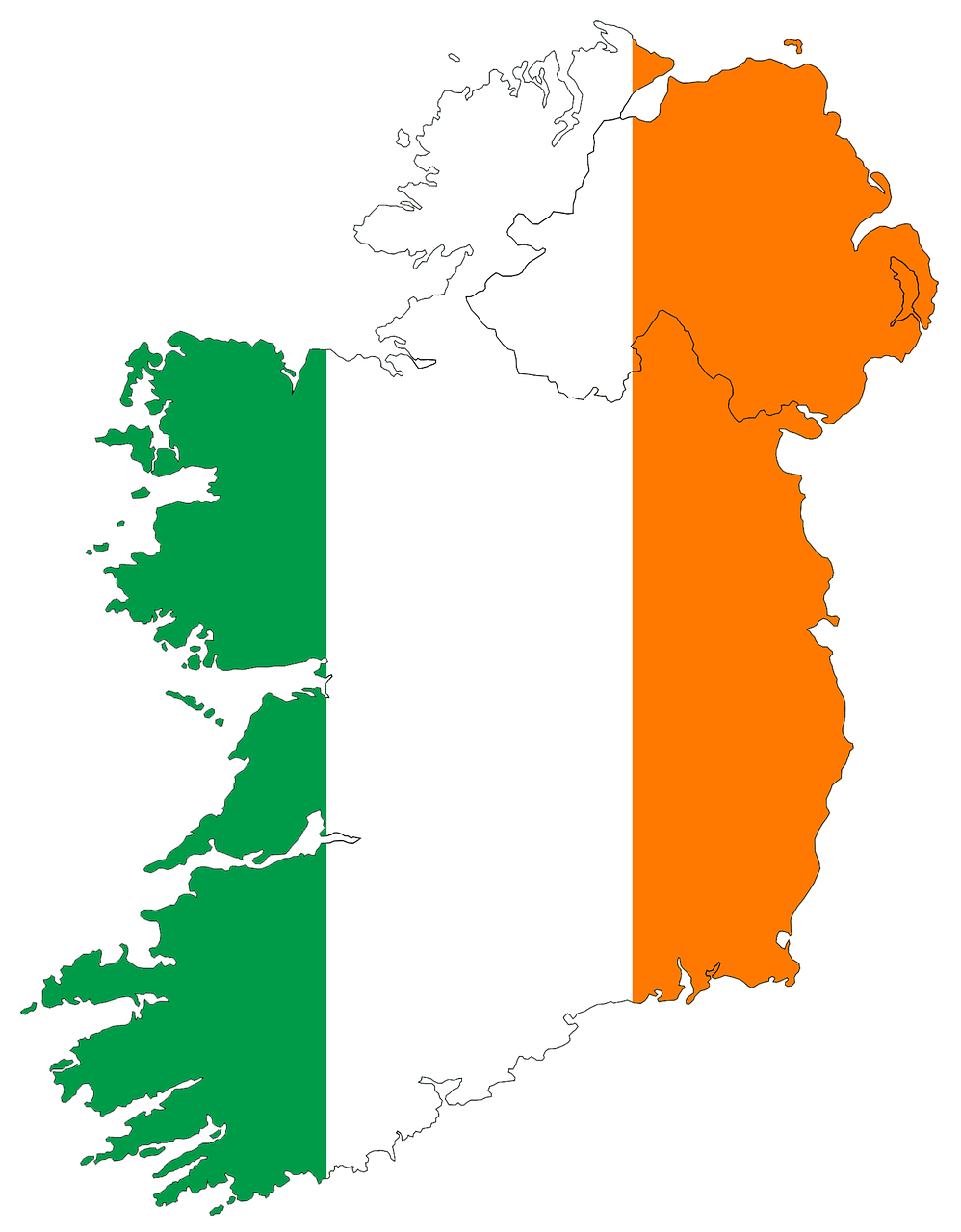
By Gerard Curtin
The first mention of Athea in the historical record is in 1298 in an inquisition into the Earl of Desmond’s lands at the Manor of Shanid. The place-name Athea translates as
Áth an tSléibhe, ‘the ford of the mountain’, suggesting that there must have been a ford across the Galey River, pronounced locally as the Gale since the thirteenth century. The church at Templeathea is first recorded in 1410. Teampall is most comm-only used for churches with a post-twelfth-century date, and frequently these are parish churches. The founding of a church at Templeathea by the early fifteenth century suggests that the population of the district at that time must have been substantial enough to be able to support this church.
In the mid-fifteenth century the dairy pastures at Knocknagornagh (north of the village) were some of the most important in the Manor of Shanid, paying a yearly rent to the Earl of Desmond of fifteen shillings. The village likely developed in the early modern period as a supply centre for local farmers. The Devon Estate map of 1710 shows the village to have become established and to have houses on both sides of the road between the Galey River and the stream that flows through the village from Parkanna (near Griffin’s butchers).
Watson’s Almanack in 1730 describes the road from Tralee to Limerick passing through Listowel, Knocka-nure and Ardagh. This shows that Athea village was connected by the road network to Listowel and Ardagh from this period. In the 1830s the new road from Glin to Abbeyfeale was laid down through the village.
During the early eighteenth century the Penal Laws were in force and Catholic priests were allowed to undertake their pastoral duties provided they regis-tered with the authorities. These records indicate that Athea was at that time under the jurisdiction of the parish priest of Abbey-feale. There was a thatched Mass house on the northern side of the main street from
c.1750 to 1832. The present St. Bartholomew’s Roman Catholic Church was built in 1832 while John Ryan was parish priest. This church was enlarged in 1862 and a parochial house was built on the Abbeyfeale road in the 1890s.
The old Mass house became the primary school from 1857 until 1921 when a new school was built on the Carrigkerry road. There were four primary schools in Athea parish. In the 1960s government policy changed and a rational-isation programme occurred with most schools in rural districts closing. In 1968, Clash, Crataloe and Knocknagornagh schools closed and the pupils travelled by bus to the primary school in Athea village.
There were two holy wells near the village. Saint Bartholomew’s Holy Well was situated north of the main street near the site of the old Mass house, while southeast of the village was
Tobar Mhichíl. This well is now used to supply water to houses in the village.
In 1837, Samuel Lewis described Athea village, as being ‘very small but picturesquely situated, and is a station of the con-stabulary police’. The bridge at Athea was originally a wooden bridge over the river Galey. According to local folklore, during faction fights in the village in the early nineteenth century a man fell off the bridge and was impaled in one of the wooden piles. It is also recalled that during the Great Famine of 1845-9 a poor woman starved to death under the bridge. About 1860 the old wood-en bridge was replaced by the present structure.
The years of the Great Famine resulted in the population increasing in Athea parish from 3,104 in 1841 to 3,266 in 1851. This was a result of the completion of the Glin to Abbeyfeale road in 1836 and the opening up of the hill lands to farmers for settlement and reclamation. The 1851 census returns include 377 inmates of an auxiliary workhouse that was situated on the north-ern side of the main street of the village. As with many small urban settle-ments during the Famine period Athea village did well during the 1840s increasing in population from 215 to 337. It was easier for the poor to secure employment and obtain relief in an urban setting than it was in rural districts. In September 1849, poor wages for employment on public relief works resulted in rioting in the village.
The first co-operative creamery in Athea was founded at Gortnagross in 1895. This was sold to the Cork and Kerry Creamery in 1898. This building was burned by the Black and Tans in 1921 during the troubled years of the War of Independence. The creamery in Athea village was opened in 1904. In 1974 Athea Creamery was sold to what later would become the Kerry Group based at Listowel, county Kerry.
Some interesting minor place-names survived in use until recent times near the village. At the rear of Browne’s post office is
Bearna na mBróg, ‘gap of the shoes’, and Currabholg, Currach Bholg, ‘marsh of the humps’ is southwest of the village. Sunvale House on the Abbeyfeale road was the former residence of the primary school principals and the stream that runs under the nearby bridge is called Cumar na Silílí, ‘ravine of the trickles’.
Kevin Danaher (1913-2002), or Caoimhin Ó’Dan-achair as he is better known, was a prominent Irish folklorist. He was born in Athea where his father Liam was the local schoolmaster. He became a collector for the Irish Folklore Commission in 1934 and went on to contribute many articles to academic journals, as well as being the author of ten books; the best known is probably
The Year in Ireland (1972). His most important research was into seasonal customs and folk practices.
The Community Centre in the village is named after Con Colbert (1888-1916); his father was a native of Athea. Colbert served under Eamonn Ceannt in Dublin during the fighting of Easter Week 1916. He was executed on 8th May 1916 for his part in the Rising.
On the northern side of the main street there is an impressive bronze sculp-ture commemorating the world-class athletic achievements of the Ahern brothers from nearby Dirreen. Dan Ahern’s world record in the triple jump lasted from 1909 to 1920, while his brother Tim won the Olympic gold medal in the triple jump in the 1908 games in London.
As with other small urban settlements the number of businesses has declined in the last half-century. It is recalled that there were fourteen pubs at one time in the village. The former Pa O’Connor’s shop is fondly remembered for carrying a wide ranging stock at good prices and drawing in a grand clientele from throughout west Limerick and north Kerry. Timmy Woulfe recalls purchasing a watch there before his first day as a teacher at the primary school in 1954. Interesting-ly, Timmy went on to become a long serving school principal, and the comings and goings, sounds and rhythms of school life in the village were to revolve around this timepiece for the next quarter century. Time is truly the master of all things.
Next time we will visit the town of Rathkeale.





